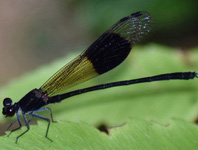Abstract
By August 2017 an estimated 13,047 species and subspecies of extant reptiles have been described by a total of 6,454 papers and books which are listed in a supplementary file. For 1,052 species a total of 2,452 subspecies (excluding nominate subspecies) had been described by 2017, down from 1,295 species and 4,411 subspecies in 2009, due to the elevation of many subspecies to species. Here we summarize the history of these taxon description beginning with Linnaeus in 1758. While it took 80 years to reach the first 1,000 species in 1838, new species and subspecies descriptions since then have been added at a roughly constant rate of 1000 new taxa every 12-17 years. The only exception were the decades during World Wars I and II and the beginning of this millennium when the rate of descriptions increased to now about 7 years for the last 1,000 taxa. The top 101 most productive herpetologists (in terms of “taxon output”) have described more than 8,000 species and subspecies, amounting to over 60% of all currently valid taxa. More than 90% of all species were described in either English (68.2%), German (12.7%) or French (9.3%).
References
Boettger, O. (1888) Über die Reptilien und Batrachier Transcaspiens. Zoologischer Anzeiger, 11, 259–263.
Boyer, D. (2017) Morphosource. Available from: http://www.morphosource.org (accessed 15 October 2017)
Egloff, W., Agosti, D., Kishor, P., Patterson, D. & Miller, J.A. (2016) Copyright and the Use of Images as Biodiversity Data. Research Ideas and Outcomes, 3, e12502
https://doi.org/10.3897/rio.3.e12502Foundation Europeana (2017) Europeana - A European Digital Library for all. Available from: https://www.europeana.eu/portal/en (accessed 15 October 2017)
Linnaeus, C. (1758) Systema naturæ per regna tria naturæ, secundum classes, ordines, genera, species, cum characteribus, differentiis, synonymis, locis. Tomus I. Editio decima, reformata. 10th Edition. Laurentii Salvii, Stockholm, Holmiae, III + 824 pp.
Tennant, J.P., Waldner, F., Jacques, D.C., Masuzzo, P., Collister, L.B. & Hartgerink, C.H. (2016) The academic, economic and societal impacts of Open Access: an evidence-based review. F1000Res, 5, 632.
https://doi.org/10.12688/f1000research.8460.3Uetz, P. (2010) The original descriptions of reptiles. Zootaxa, 2334, 59–68.
Uetz, P., Freed, P. & Hošek, J. (2017) The Reptile Database. Available from: http://www.reptile-database.org (accessed 29 August 2017)
Zug, G.R., Brown, H.H.K., Schulte II, J.A. & Vindum, J.V. (2006) Systematics of the Garden Lizards, Calotes versicolor Group (Reptilia, Squamata, Agamidae), in Myanmar: Central Dry Zone Populations. Proceedings of the California Academy of Sciences, 57 (2), 35–68.

